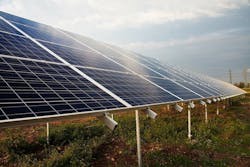Emily Newton is an industrial journalist. She regularly covers stories for the utilities and energy sectors. Emily is also Editor-in-Chief of Revolutionized.
Energy storage prices for lithium-ion batteries have plummeted in the past decade — dropping from more than $1,100 per kilowatt-hour in 2010 to below $100 in 2020. Major innovations in battery technology, combined with significant industrial investment driven by companies like Tesla, have resulted in lower-than-ever prices for battery storage.
This change could have a major impact on the utilities industry, which is already working to manage a worldwide transition away from fossil fuels and increasing energy demand. However, it is not clear when cheaper energy storage will start to have a major impact.
Duck Curves & California’s Renewable Intermittency Problem
One possible impact is that cheaper energy storage may make fossil fuels obsolete, or make it much easier for utilities to manage the growing adoption of renewable energy.
States that have invested heavily in renewables have faced some significant roadblocks. One of the most challenging has been the emergence of “duck curves” in the 24-hour load profile in areas with significant adoption of intermittent renewables, like wind and solar.
Duck curves are produced when power produced by variable, non-controllable energy sources, like wind or solar, fluctuate during the day. This causes significant differences between power demand and supply, as well as risks of oversupply and potential damage to grid infrastructure.
In California, the state ISO (independent system operator) manages these duck curves with several tactics, including oversupply mitigation and automated direction of controllable generation resources — primarily fossil fuel-fired power plants.
This means fossil fuels are still necessary to meet the demand of California consumers, and that increased adoption of renewables may be a problem for local utilities, which will need to manage an increasing number of non-controllable, variable-generation resources.
Growing Investment in Battery Storage Projects
There has also been significant investment in a number of new, grid-scale battery storage projects that may help manage the renewable intermittency problem. At Moss Landing Power Plant in California, phase I of construction on two of the world’s largest battery projects so far was recently completed.
With these projects, energy company Vistra and electric vehicle manufacturer Tesla currently store 300MW/1,200MWh and 182.5 MW/730 MWh of power, respectively. Both developers also have plans to further expand the storage capacity at these sites.
At the same time, new solar arrays with built-in battery storage are also becoming more common. In Kern County, California, for example, 8minute Solar Energy is building one of the state’s first solar-plus-storage power plants.
In addition to a 400-megawatt solar array, the facility will also have 800 mWh of on-site energy storage. The battery will provide energy back to the grid and power the site after sunset, eliminating the need for on-site natural gas generators.
These projects together will not cover the needs of California consumers, who may need as much as 55 gigawatts of energy storage by the middle of the century. However, they present a look into the future that utility companies should prepare for.
If these early storage projects are successful, they may push countries worldwide to begin a more substantial transition away from fossil fuels. Federal and business investment in new battery technology may also accelerate this trend as battery prices continue to fall.
Utility companies need to be prepared for this shift.
How Cheap Will Batteries Will to Be for a 100% Renewable Grid?
Utility companies likely still have a long time to plan for the fossil fuel phase-out. Much of the utilities industry is already moving towards net-zero emissions by mid-century. Even these major shifts in the availability of grid-scale battery storage will not likely disrupt utility operations. For many, it may even help them commit to their net-zero pledges.
It is likely that batteries will eventually enable a renewable grid. Before this can happen, batteries will need to become much cheaper than they already are.
In 2019, a research team headed by two MIT professors estimated that battery prices would need to dip below $20 per kWh to enable a grid powered entirely by a wind-solar energy mix.
While the price of lithium-ion batteries is falling fast, it is unlikely that the price drops seen over the past decade will continue at the same pace. There may also be a price floor that researchers have not yet hit.
A 2020 report from Guidehouse Insights forecasted that price drops may come to an end within the next few years. By 2024, the price of batteries could slow down towards an equilibrium point, with the price of lithium-ion batteries near the cost of raw materials commodities.
With lithium prices rapidly falling, however, the cost of raw materials may not be a major barrier for manufacturers. The metal, once called “white gold” due to its high value, has recently been called “white dust.”
Growth in lithium supply has begun to significantly outpace growth in demand, resulting in raw materials prices that may make the $20-per-kWh goal for lithium batteries a possibility.
Estimating lithium prices is difficult because costs for the metal have traditionally not been traded on an open exchange. This forces buyers to rely on assessments from commodities data trackers to estimate price fluctuations. The downward trend in lithium prices has been consistent since around 2018.
In any case, utilities will likely have time to plan for the transition. Falling lithium prices and growing investment in battery technology mean this transition may happen sooner rather than later, however.
Utilities Must Prepare for the Accelerating Shift to Renewables
The growing adoption of renewable energy may present both significant challenges and opportunities for utility companies. As investment in intermittent energy sources increases, utilities will need to manage the gulf between supply and demand that renewables can produce.
Cheaper batteries may help manage this problem, but will likely also lead to further investment in renewable energy.
A fully renewable grid likely will not be possible anytime soon. However, falling lithium prices and improved battery technology mean it may be a certainty.
For utilities already on track for net-zero emissions by the middle of the century, this may not be a problem. For companies that have avoided a serious commitment to reduced emissions so far, however, it could pose new challenges.


